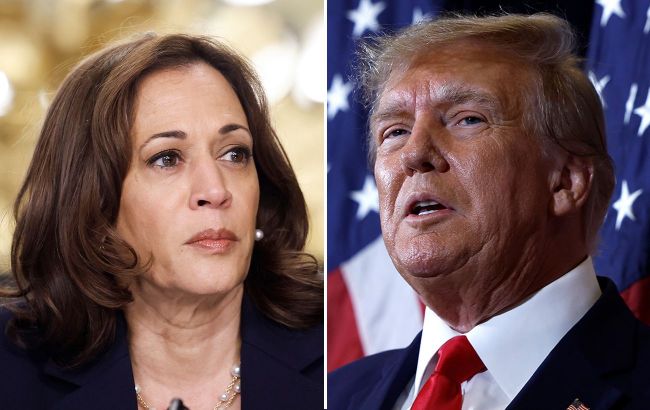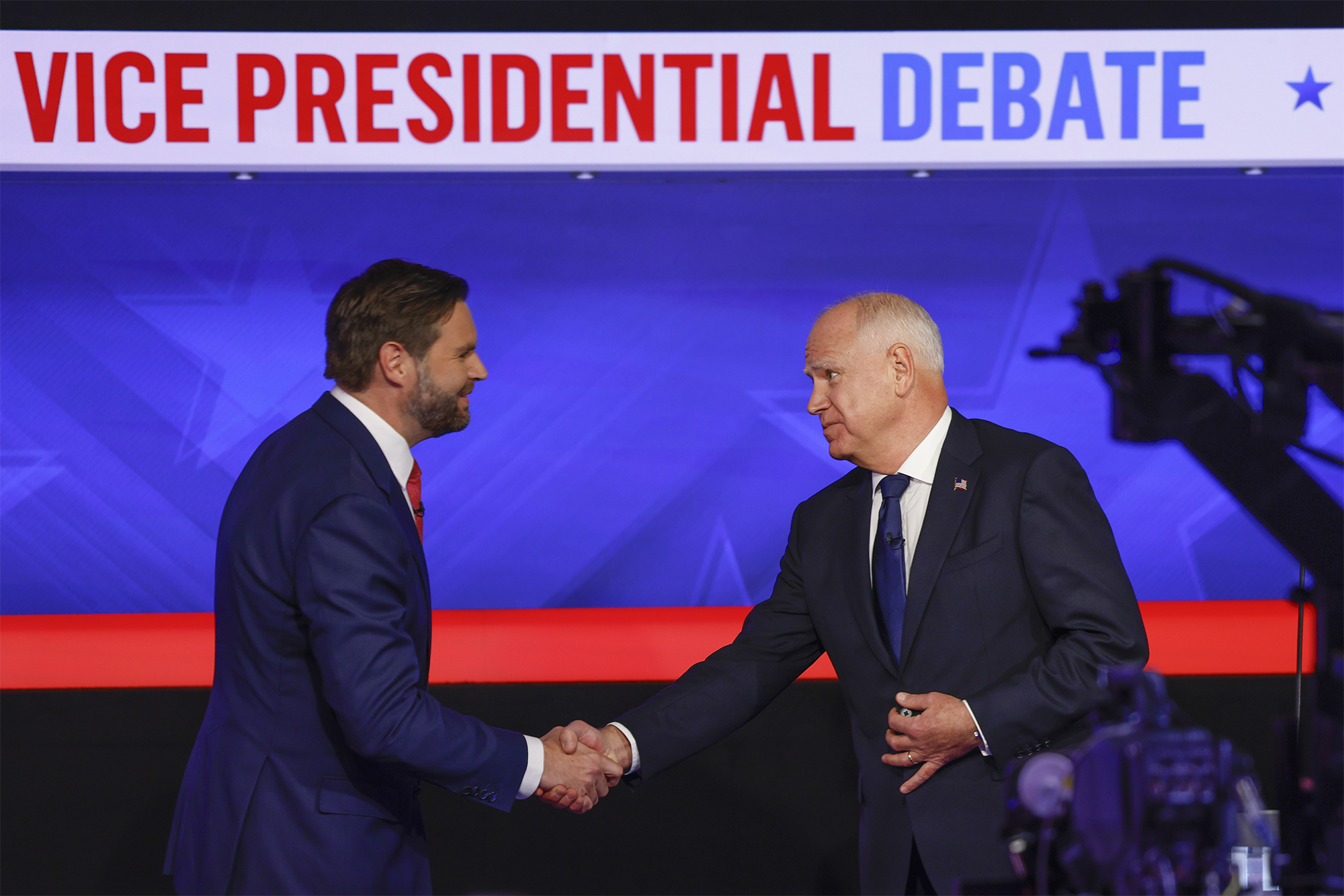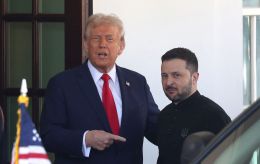One month before the US election: Latest polls and what Trump and Harris are preparing against each other
 Kamala Harris and Donald Trump (RBC-Ukraine collage)
Kamala Harris and Donald Trump (RBC-Ukraine collage)
Exactly one month from now, on November 5, the US presidential election will take place.
RBC-Ukraine explains how Kamala Harris and Donald Trump's race is going, their ratings, and what to expect in the last decisive weeks.
Contents
There is exactly one month left before the US presidential election. The dramatic twists and turns during the campaign are already enough for a blockbuster movie. It's probably not over yet, as the teams of both candidates, Donald Trump and Kamala Harris, are saving the most interesting for the very end.
Candidate ratings
The ratings of candidates in the United States are virtually equal. An October 2 Emerson College poll shows that 50% of voters support Kamala Harris, while 48% support Donald Trump. One percent supports someone else, and another one percent is undecided.
Polls in key swing states also show the same results within the statistical margin of error.
According to The New York Times/Siena College poll in Michigan, Harris gets 48%, Trump - 47%.
In Wisconsin, Harris is 2 points ahead of Trump with 49% to 47%.
According to a Fox News poll, both candidates receive 49% of the vote in Pennsylvania.
In North Carolina, Trump is ahead of Harris by a minimal margin - 50% to 49%.
Most sources that indicate the overall chances of the candidates to win based on polls still give a slight advantage to Harris.
Candidate strategies
The strategies of both candidates were clearly evident during their debate on September 10. Harris focused on the emotion of joy to present herself as a new, attractive political figure. At the same time, she distanced herself from the failures of the current administration and emphasized her opponent's shortcomings. Trump, in turn, relied on the emotion of anger and criticized Harris for her failures as vice president and inconsistent messages, as she changed her mind on many issues.
All of these narratives generally persist. Both candidates continue to travel to cities and towns across the United States and rely on their signature themes.
Trump is still exploiting the issues of illegal migration and the economy. He is also trying to attract undecided voters - middle-class and black voters in the swing states of the blue wall - Pennsylvania, Michigan, and Wisconsin. To persuade them, Trump had a programmatic article in Newsweek about a new American industrialism.
The key tools he proposes are protectionism, tax breaks for manufacturers in the United States, denial of foreigners' purchase of strategic enterprises, state support for investments in technological leadership, and a sharp reduction in migration, as migrants take jobs away from blacks and Latinos in particular.
In the swing states of the Sun Belt - Nevada, Arizona, and Georgia - Trump continues to emphasize illegal migration, besides the economy. His main message can be described as: “Illegal immigrants are taking jobs away from Latinos who have moved to the US legally”. According to the poll, the level of support for Trump among Hispanics is about 40%. This is already more than he received from this group of voters in 2020. Back then, 33% of Hispanics voted for Trump.
Harris continues to use the themes of abortion, and the importance of democracy, relying on mobilizing minorities. She presented a detailed economic program for undecided voters.
The 82-page plan, titled “A New Way Forward for the Middle Class,” largely fleshes out policies that Harris had already mentioned during the campaign. It provides for a number of tax breaks - new small business owners will receive a deduction of $50,000. First-time homebuyers will receive a $25,000 bonus, and young parents will receive $6,000 in the first year of their child's life.
Biden's industrial policy to change the paradigm of the economy will continue, but mainly using the available funds that Congress has already allocated in recent years. It includes tax credits for strategic industries such as biotechnology and aerospace, which will be paid for by raising the corporate tax rate.
Harris' team is still restricting media access to the candidate. She has given few interviews during the campaign, although she has been active at rallies.
Vice presidential debate
On October 1, the second debate took place, but this time between vice presidential candidates Tim Walz and JD Vance. Unlike the debate between Trump and Harris, this time the candidates were tactful.
Traditionally, the vice presidential debates have focused on domestic issues. Migration, the economy, abortion, and even the problem of school shootings were among the topics. And they had a discussion in a friendly atmosphere, almost without criticizing each other. Instead, both Vance and Walz attacked Harris and Trump directly.

JD Vance and Tim Walz during the debate (photo: Getty Images)
The topic of Ukraine was not raised at the debate, although both speakers had something to say. Earlier, Vance made several harsh statements about Ukraine and even presented his version of a “peace plan,” which essentially means Ukraine's surrender. The Harris team is more restrained in its statements, which was evident during the recent visit of the Ukrainian president to the United States.
Although the Republican team did the most noticeable work on the mistakes, both debaters emphasized the issues in which they are strong. According to the polls conducted immediately after the debate, 42% said they believed Vance was the winner, 41% - Walz. 17% said it was a tie. 60% said that Walz was prepared for the debate, while 55% said the same about Vance.
According to viewers, Vance spoke better on the economy (51% vs. 49%) and immigration (52% vs. 48%). Walz - on abortion (62% vs. 38%) and health care (59% vs. 41%). The candidates' answers to questions about the Middle East satisfied the same number of viewers.
Overall, 42% gave the victory to Vance and 41% to Walz. After the debate, the Democrat added 8% to his rating, while the Republican decreased his anti-rating from 54% to 47%.
The main result of the debate is the beginning of JD Vance's transformation from a radical to a moderate candidate in the eyes of the electorate.
October surprises
In the history of US elections, the last month before the vote regularly sees events that significantly affect the outcome of the election: both homemade from candidates and black swans from objective reality. At least two events are already pretending or have pretended to be such October surprises.
One of them began on October 1. Dockworkers in the ports of the US East Coast went on the biggest strike in 50 years to demand higher wages. If it had dragged on, it could have caused coronavirus-era problems: empty store shelves, exporters' losses, and price hikes. Almost 50% of food imports to the United States come through ports blocked by picketers. However, on October 4, the dockworkers agreed to end the strike.
Another event is related to the Middle East. On September 23, Israel launched a large-scale military operation against Hezbollah in response to constant shelling. In early October, the ground phase of the operation began in Lebanon. As a response, Hezbollah's sponsor Iran launched a missile attack on Israel, which increased the risk of a large-scale war between Israel and Iran.
This puts US military bases across the region at risk. On the other hand, the US military helped repel the attack on Israel. The Biden administration clearly states that it will defend Israel, but this demoralizes Arab voters who live densely in the swing states of Michigan and Georgia.
One can also expect that the teams of both candidates will pull out all the surprises in the last month before the election to win over the few undecided voters and maximize the turnout of "their" voters.
As a reminder, President of Ukraine Volodymyr Zelenskyy paid a visit to the United States to present his plan for Ukraine's victory to current US President Joe Biden, as well as presidential candidates Kamala Harris and Donald Trump.
Sources: data from opinion polls, articles by CNN, Newsweek, Bloomberg, ABC, CBC, Politico, Axios, PRweek, and BBC.

